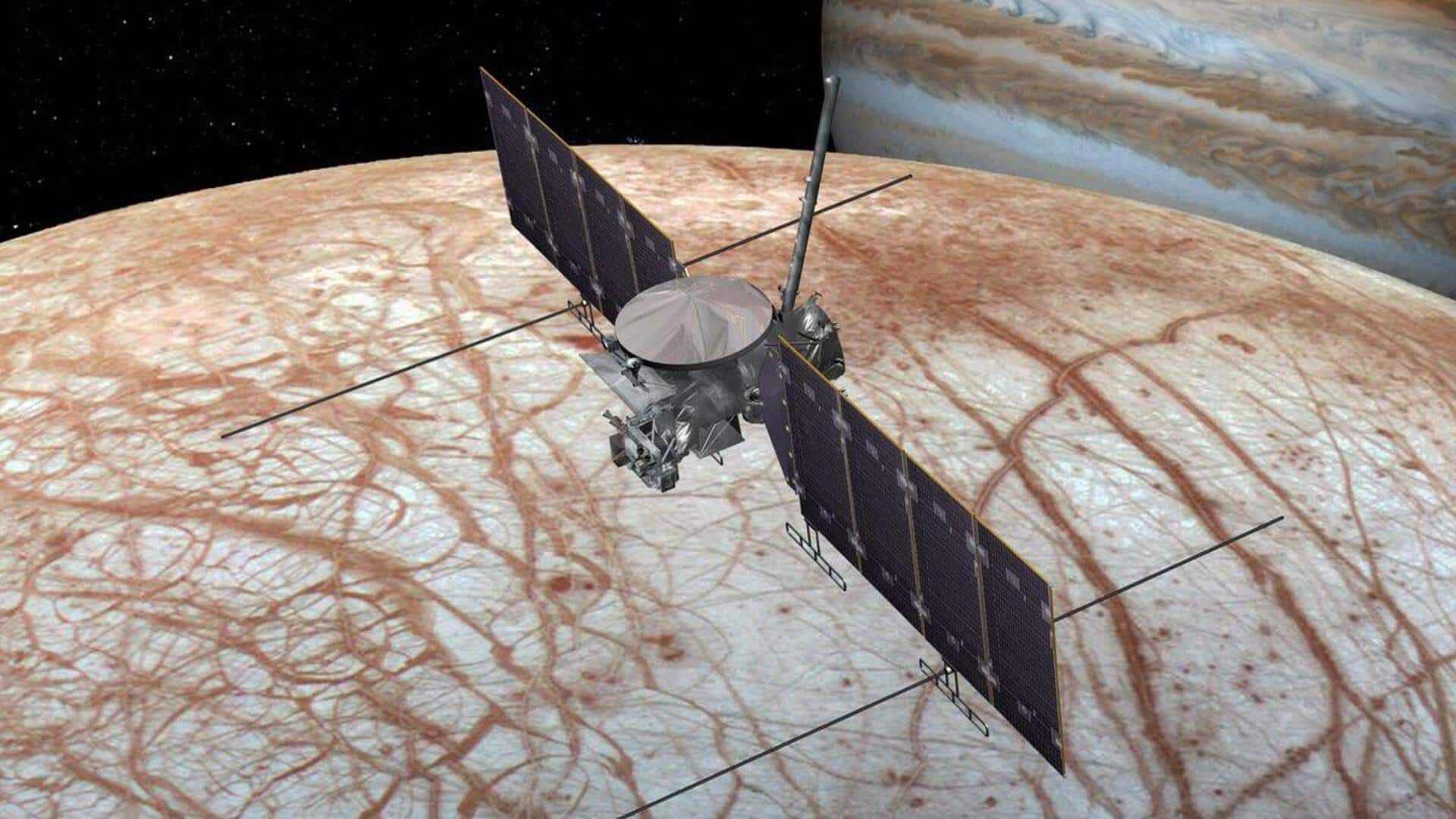
NASA mission to explore Jupiter's moon will launch next month
What's the story
NASA's Europa Clipper spacecraft is set to launch next month, following a successful review of its mission readiness. The spacecraft is designed to explore Jupiter's moon, Europa, and search for signs of habitability. The launch window opens on October 10. This announcement comes after the mission successfully passed Key Decision Point E, a crucial phase in the pre-launch process that greenlights the mission for takeoff.
Technical challenges
Transistor issue resolved
In May, a potential problem with the spacecraft's transistors was identified. These components are essential for regulating the vehicle's electrical flow. There were concerns about their ability to withstand Jupiter's intense radiation environment. However, after four months of rigorous testing at various NASA facilities, the team confirmed that the transistors are indeed capable of surviving in such conditions. This resolution prevented a possible 13-month postponement of the mission.
Mission details
Europa Clipper's mission remains unchanged
Despite the transistor issue, the Europa Clipper's mission plan, goals, and trajectory remain unchanged. The spacecraft is equipped with 10 scientific instruments designed to assess whether life could exist on Europa. "It's the last sort of big review before we really get into that launch fever, and we're really happy to say that they unequivocally passed that review today," said Nicola Fox from NASA during a news conference yesterday.
Radiation risks
Jupiter's radiation poses challenges
Jupiter's magnetic field is 20,000 times stronger than Earth's, trapping charged particles and accelerating them to high speeds. This process results in intense radiation that bombards Europa and Jupiter's other moons. "Jupiter's engulfed in more radiation than any planet in our solar system, and that's one of the reasons why exploring the Jupiter system is so challenging," said Jordan Evans from NASA.
Recovery process
Transistors can self-heal between flybys
The testing process for the transistors was validated using data from previous NASA missions to Jupiter. The tests simulated spaceflight conditions and revealed that the transistors could self-heal between flybys. "We concluded, after all of this testing, that during our orbits around Jupiter, while Europa Clipper does dip into the radiation environment, once it comes out long enough to give those transistors the opportunity to heal and partially recover between flybys," Evans explained.
Mission objectives
Europa Clipper's primary goals
The Europa Clipper is not a life-detection mission, but rather aims to determine if the necessary ingredients for life — including energy, water, and chemistry — are present on Europa. "It's a chance for us to explore, not a world that might have been habitable billions of years ago, but a world that might be habitable today," said Curt Niebur from NASA.